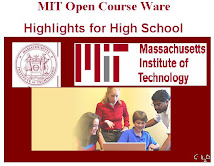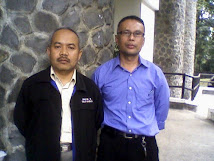

 http://journals.iop.org/
http://journals.iop.org/External links
General
- Aristotle's Physics, trans. by R. P. Hardie and R. K. Gaye
- Physics and Math Textbooks Numerous online textbooks on Physics and Mathematics
- Usenet Physics FAQ. A FAQ compiled by sci.physics and other physics newsgroups.
- Physics.org - Web portal run by the Institute of Physics.
- World of Physics. An online encyclopedic dictionary of physics.
- Website of the Nobel Prize in Physics.
- The Physics Network Official Physics Network
- Physics Today - Your daily physics news and research source
- The Skeptic's Guide to Physics
- PlanetPhysics Online Physics
- Physics 2005: Website of the World Year of Physics 2005
- Physicsweb.org
- Contemporary Physics
Organizations
- AIP.org Website of the American Institute of Physics
- IOP.org Website of the Institute of Physics
- APS.org Website of the American Physical Society
- SPS National Website of the Society of Physics Students
- Physics & Math Forums
- Royal Society Website of the Royal Society. Although not exclusively a physics institution, it has a strong physical history.
Physics education
From Wikipedia.
Physics education refers both to the methods currently used to teach physics and to an area of pedagogical research that seeks to improve those methods. Historically, physics has been taught at the high school and college level primarily by the lecture method together with laboratory exercises aimed at verifying concepts taught in the lectures.
Unfortunately, owing to the abstract and counterintuitive nature of many of the elementary concepts in physics, the lecture method often fails to help students overcome the many misconceptions about the physical world that they have developed before undertaking formal instruction in the subject. In most introductory physics courses mechanics usually is the first area of physics that is discussed. Newton's laws of motion, which describe how massive objects respond to forces, are central to the study of mechanics. Newton arrived at his three laws of motion from an extensive study of empirical data including many astronomical observations.
However, students frequently have preconceptions about the world around them that makes it difficult for them to accept Newton's Laws of Motion. As an example Newton's First Law, also known as the law of inertia, states that, in an inertial frame, a body at rest will remain at rest and that a body moving at constant velocity will continue to move with the same velocity unless a net force acts on the body. Many students hold the misconception that a net force is required to keep a body moving at constant velocity. They know that to slide a book across a table a "push" has to be exerted on the book. However, they fail to take into account that there is more than one force acting on the book when it is being pushed across the table at constant velocity. In addition to the "push" being exerted, there also is a frictional force in the opposite direction acting on the book from the tabletop. When the book moves at constant velocity those two forces balance out (add vectorially) to produce a net force of zero.
In an active learning environment students might experiment with objects in an environment that has almost no friction, for example a block moving on an almost frictionless air table. There they would find that if they start the block moving at constant speed, it continues to move at constant speed without the need for a constant "push". It is hoped that exercises of this nature will help students to overcome their preconceived ideas about motion.
Contents |
Physics education in American high schools
Physics is taught in high schools, college and graduate schools. In the US, it has traditionally not been introduced until junior or senior year (i.e. 12th grade), and then only as an elective or optional science course, which the majority of American high school students have not taken.
Physics First is a popular and relatively new movement in American high schools. In schools with this curriculum 9th grade students take a course with introductory physics education. This is meant to enrich students understanding of physics, and allow for more detail to be taught in subsequent high school biology, and chemistry classes; it also aims to increase the number of students who go on to take 12th grade physics or AP Physics (both of which are generally electives in American high schools.)
Goals of physics education research
The primary goal of physics education research is to develop pedagogical techniques and strategies that will help students learn physics more effectively. Research often focuses on learning more about the common misconceptions that students bring to the physics classroom, so that techniques can be devised to help students overcome these misconceptions. A variety of interactive learning methods (sometimes also called active learning methods) and laboratory experiences have been developed with this aim.
See also
- Physics
- Science education
- Balsa wood bridge
- Egg drop competition
- Mousetrap car
- Walter Lewin Lectures on Physics
- Feynman lectures
- Learning Assistant Model
The Physics Teacher
| The Physics Teacher | |
|---|---|
| Abbreviated title | Phys. Teach. |
| Discipline | Physics |
| Language | English |
| Publication details | |
| Publisher | American Association of Physics Teachers (U.S.A) |
| Publication history | 1963 to present |
| Indexing | |
| ISSN | 0031-921x |
| Links | |
The Physics Teacher is a peer-reviewed journal published by the American Association of Physics Teachers and includes papers on physics research, papers on the history and philosophy of physics, papers on applied physics, papers curriculum developments, papers on pedagogy, papers on instructional lab equipment, and also includes book reviews.
The Journal was established in 1963; the current editor is Karl C. Mamola, at Appalachian State University.
Editorial policy for the journal explicitly specifies that articles submitted for publication should contribute to strengthening the teaching of introductory physics, whether at the high school or college level.
External links
American Association of Physics Teachers
The American Association of Physics Teachers was founded in 1930 for the purpose of "dissemination of knowledge of physics, particularly by way of teaching."[1] There are more than 10,000 members that reside in over 30 countries. AAPT publications include two peer-reviewed journals, the American Journal of Physics and The Physics Teacher. The association has two annual National Meetings (winter and summer) and has regional sections with their own meetings and organization. The association also offers grants and awards for physics educators and programs and contests for physics educators and students.
Contents |
Brief history
The American Association of Physics Teachers was founded on December 31, 1930, when forty-five physicists held a meeting during the joint APS-AAAS meeting in Cleveland specifically for that purpose.
The AAPT became a founding member of the American Institute of Physics after the other founding members were convinced of the stability of the AAPT itself after a new constitution for the AAPT was agreed upon.
Contests
The AAPT sponsors a number of competitions. The Physics Bowl, Six Flags' roller coaster contest, and the US Physics Team are just a few. The US physics team is determined by two preliminary exams and a week and a half long "boot camp." Each year, five members are selected to compete against dozens of countries in the International Physics Olympiad (IPHO).
See also
References
External links
- American Association of Physics Teachers web page
- AAPT sponsored events
- Finding Aid for the American Association of Physics Teachers, South Atlantic Coast Section Records at the University of North Carolina at Greensboro















Tidak ada komentar:
Posting Komentar